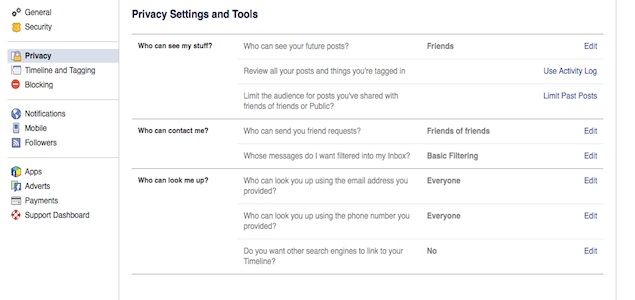- Home
- Social networking
- Social networking News
- Facebook offers a peek at how it handles privacy, details a few changes
Facebook offers a peek at how it handles privacy, details a few changes

A Techcrunch report details information Facebook shared with media recently. The social networking giant claims that it conducts 80 trillion privacy checks every day to ensure that user data is not wrongly exposed. This is in addition to conducting 4,000 daily surveys in 27 languages across the globe on privacy to understand what users want from their Facebook accounts. These surveys have prompted Facebook to start displaying onscreen settings about how privacy setting work.
The privacy settings descriptions will also include the manner in which users will share their status updates with audiences, and also about re-sharing. Facebook's privacy engineering manager, Reylene Yung, says that there are two teams at Facebook to manage the privacy. The first being the Privacy Product Engineering team, and the second the Privacy Infrastructure Engineering team. The product engineering team works on building settings that allow users to control viewing of their online content. The infrastructure engineering team on the other hand works on building an infrastructure that allows engineers to develop without worrying about privacy leaks accompanying new features being rolled out.
Facebook famously made changes to its policies based on comments posted by teenagers on the privacy surveys it conducted. The teenagers repeatedly asked for the ability to post publicly (an option previously unavailable), and Facebook finally listened, and gave the option to users in October 2013. Recent surveys also identified some misconceptions users have about Facebook's privacy settings, and to set those right, the company has some explanations handy.
The company says it will let people set their old Cover photos to only be visible to a specific audience. It explains that when a friend reshares a piece of a user's content, it will notify them that the reshare will only be visible to mutual friends. Facebook also said it would begin testing an in-line privacy selector for status updates that explains who "public" or "friends" posts will be shown to.
The fine line that Facebook has to tread whilst making privacy settings is to try to please both types of users - those that want granular controls, and the those that want intuitive and simplistic controls. The social networking giant has been taking flak for being unable to tread the fine line very well. Perhaps displaying the explanations of privacy settings onscreen is a good way to bring about more awareness, and can be considered a step in the right directionGet your daily dose of tech news, reviews, and insights, in under 80 characters on Gadgets 360 Turbo. Connect with fellow tech lovers on our Forum. Follow us on X, Facebook, WhatsApp, Threads and Google News for instant updates. Catch all the action on our YouTube channel.
Related Stories
- Samsung Galaxy Unpacked 2025
- ChatGPT
- Redmi Note 14 Pro+
- iPhone 16
- Apple Vision Pro
- Oneplus 12
- OnePlus Nord CE 3 Lite 5G
- iPhone 13
- Xiaomi 14 Pro
- Oppo Find N3
- Tecno Spark Go (2023)
- Realme V30
- Best Phones Under 25000
- Samsung Galaxy S24 Series
- Cryptocurrency
- iQoo 12
- Samsung Galaxy S24 Ultra
- Giottus
- Samsung Galaxy Z Flip 5
- Apple 'Scary Fast'
- Housefull 5
- GoPro Hero 12 Black Review
- Invincible Season 2
- JioGlass
- HD Ready TV
- Laptop Under 50000
- Smartwatch Under 10000
- Latest Mobile Phones
- Compare Phones
- Realme P4x 5G
- OnePlus Ace 6T
- OPPO A6x 5G
- Samsung Galaxy Z TriFold
- Poco F8 Ultra
- Poco F8 Pro
- Huawei Mate 80 RS Master Edition
- Huawei Mate 80 Pro Max
- Asus ProArt P16
- MacBook Pro 14-inch (M5, 2025)
- Poco Pad M1
- Poco Pad X1
- Just Corseca Skywatch Pro
- Honor Watch X5
- Acerpure Nitro Z Series 100-inch QLED TV
- Samsung 43 Inch LED Ultra HD (4K) Smart TV (UA43UE81AFULXL)
- Asus ROG Ally
- Nintendo Switch Lite
- Haier 1.6 Ton 5 Star Inverter Split AC (HSU19G-MZAID5BN-INV)
- Haier 1.6 Ton 5 Star Inverter Split AC (HSU19G-MZAIM5BN-INV)

















